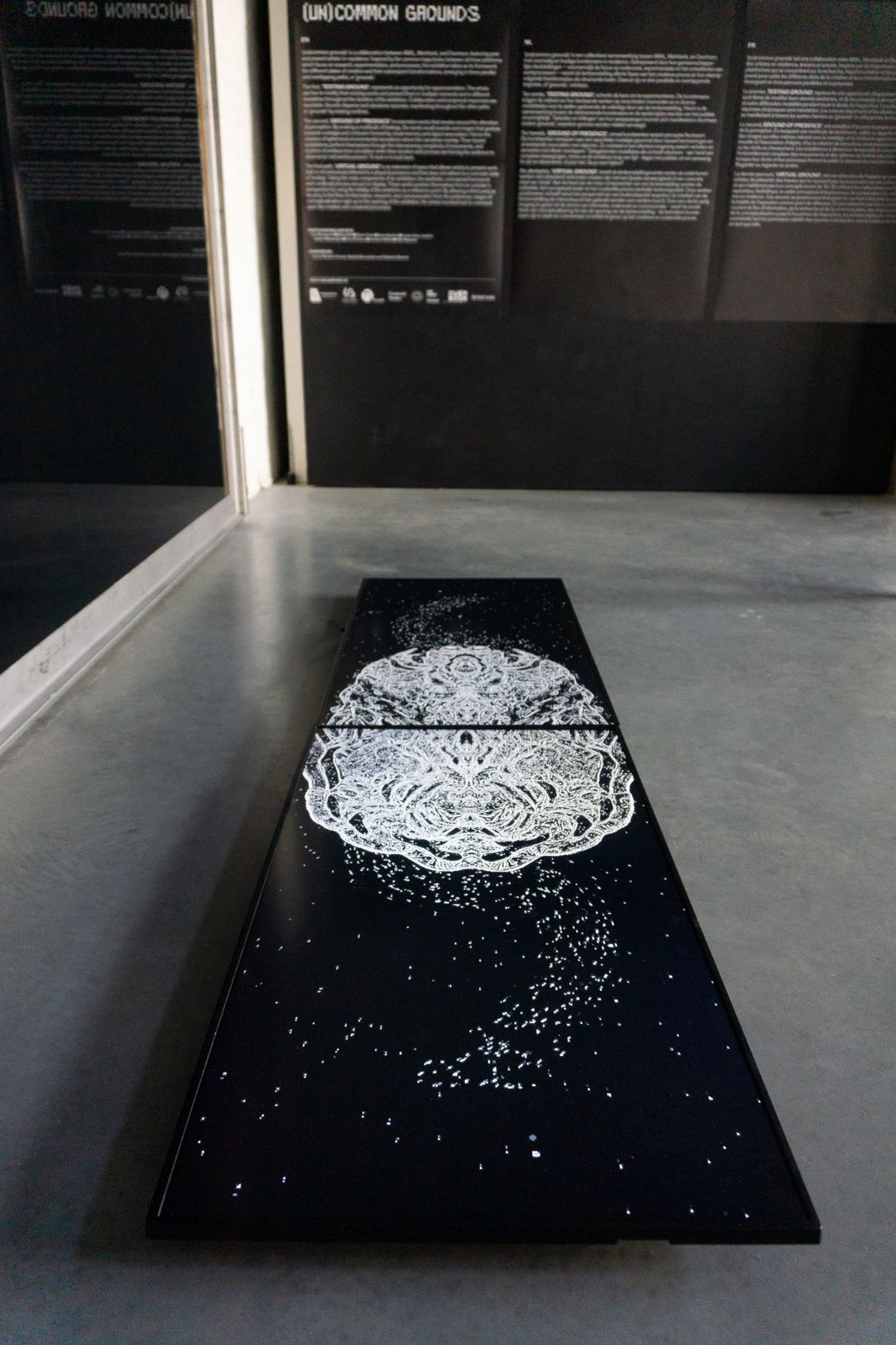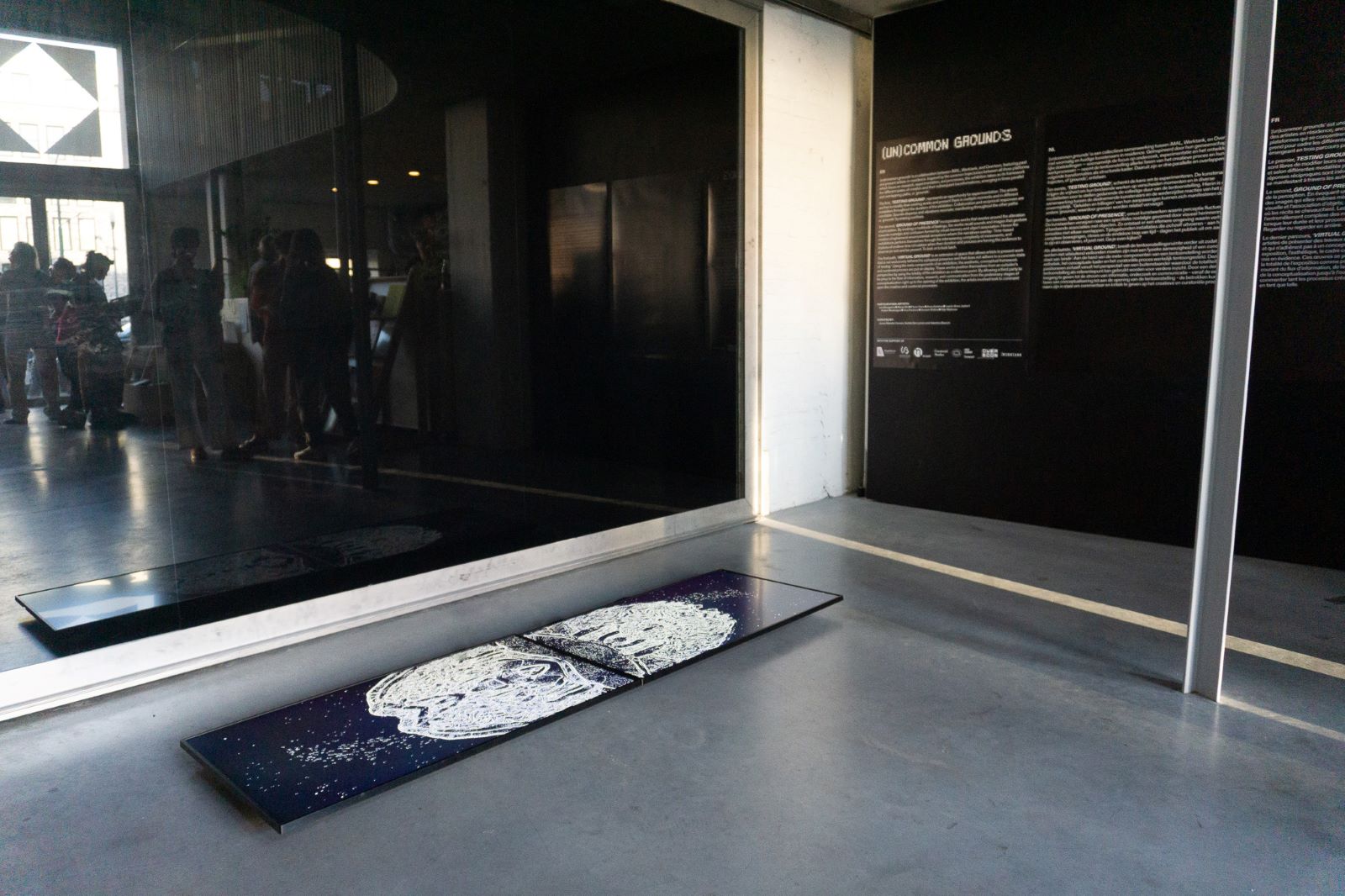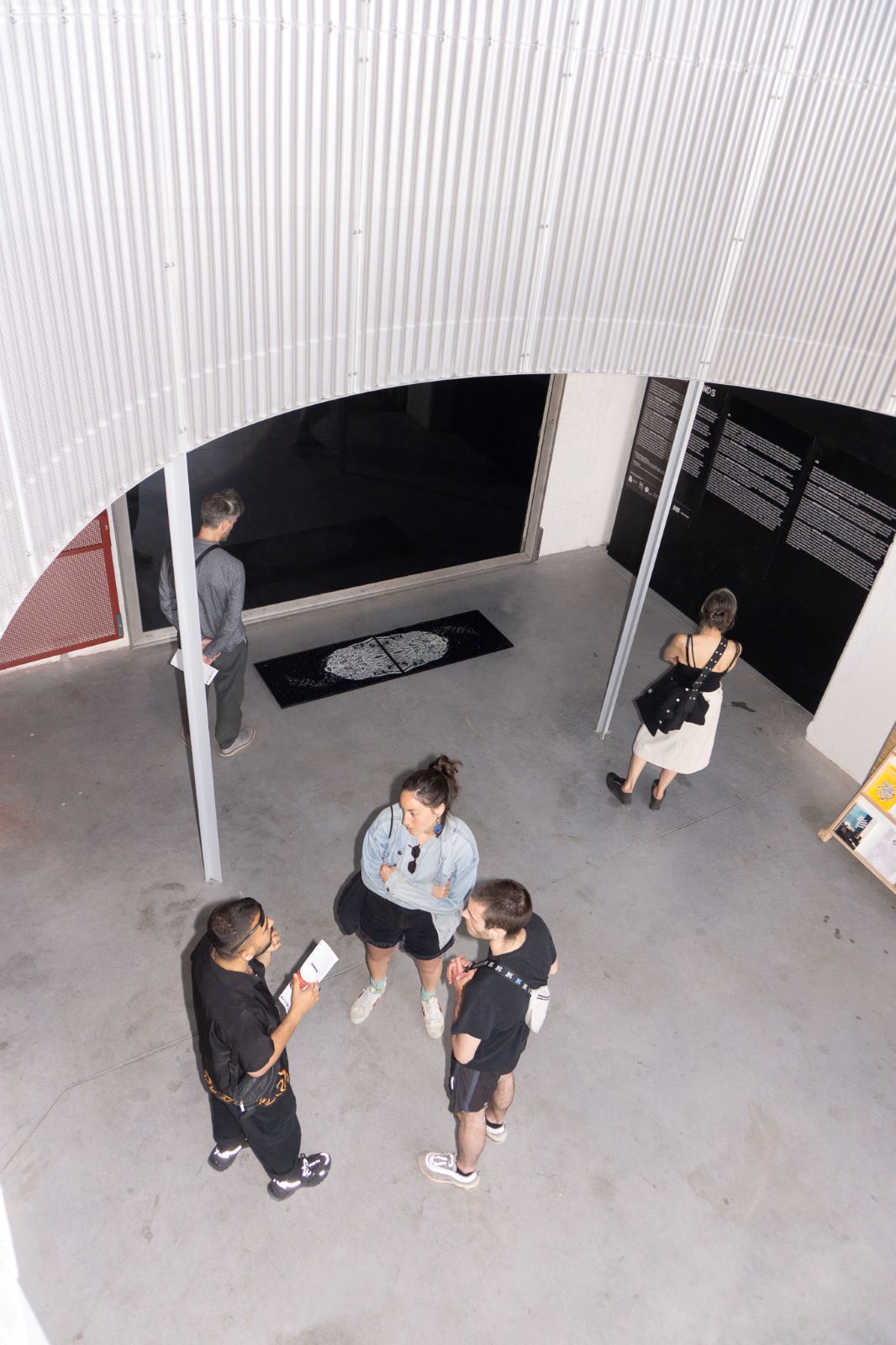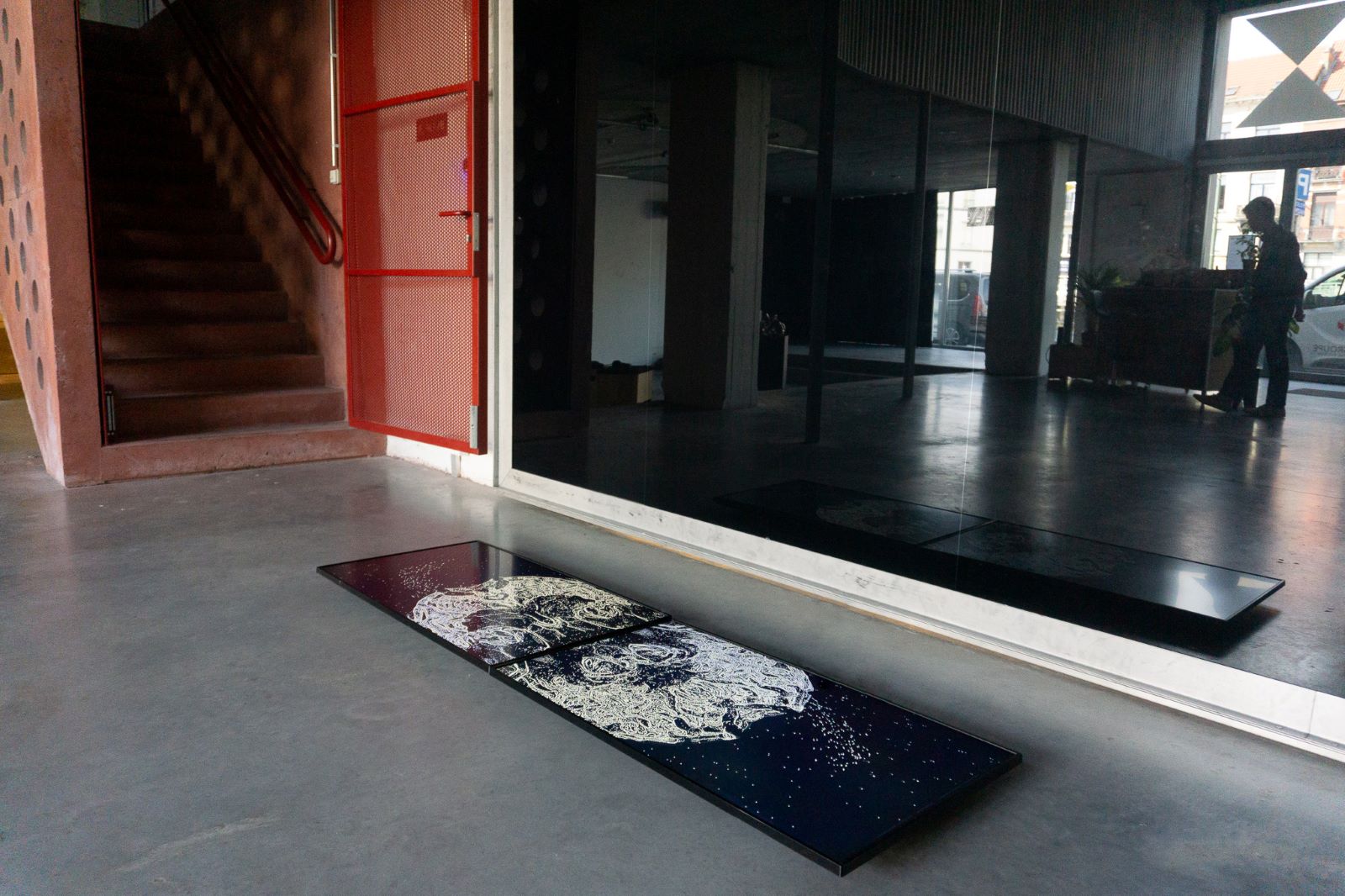نسج البصر / Weaving of Sight
Hussein Shikha, 2022
Concept & realisation: Hussein Shikha
Production: Werktank, with the support of the Flemish government, iMAL & KASK Curatorial Studies
© Photos: Ernest Thiesmeier
Previously
2022 - KIKK in Town, Namur (Belgium)
Similar to layers of threads, the brain can learn to recognize patterns which makes it capable of weaving together visual forms to create a visual tapestry or simply our sight.
Following Donna J. Haraway’s theory on neuron connections, through the subjective multi-layered consciousness, the artist’s brain becomes a metaphor for the neural network in which the spectator experiences presented works. That inner tapestry is embodied in the visual representation of one’s brain.
On the technical and aesthetic capacities of this work, pixelation becomes a thread or a connection between technologies of weaving and the development of digital computing. This work becomes an opposition against arguments which relegates carpet weaving to an older temporal order, one incapable of connecting to modern technologies. Contrary to conventional ways of seeing digital technologies, there are real and vital connections – structural, aesthetic, and even spiritual connections – between older ways of weaving reality and newer ways.
Net als bij lagen draden, kunnen de hersenen leren patronen te herkennen, waardoor ze in staat zijn om visuele vormen samen te weven om een visueel tapijt of gewoon ons zicht te creëren.
In navolging van Donna J. Haraway’s theorie over neuronverbindingen, door het subjectieve meerlagige bewustzijn, wordt het brein van de kunstenaar een metafoor voor het neurale netwerk waarin de toeschouwer gepresenteerde werken ervaart. Dat innerlijke tapijt wordt belichaamd in de visuele representatie van iemands hersenen.
Op de technische en esthetische capaciteiten van dit werk wordt pixelvorming een rode draad of een verbinding tussen weeftechnologieën en de ontwikkeling van digitale computing. Dit werk wordt een oppositie tegen argumenten die tapijtweven degraderen tot een oudere temporele orde, een die niet in staat is om verbinding te maken met moderne technologieën. In tegenstelling tot conventionele manieren om digitale technologieën te zien, zijn er echte en vitale verbindingen – structurele, esthetische en zelfs spirituele verbindingen – tussen oudere manieren om de realiteit te weven en nieuwere manieren.



